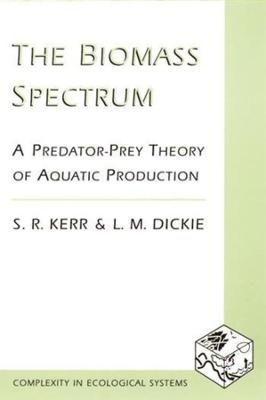
The Biomass Spectrum
A Predator-Prey Theory of Aquatic Production
Seiten
2001
Columbia University Press (Verlag)
978-0-231-08459-8 (ISBN)
Columbia University Press (Verlag)
978-0-231-08459-8 (ISBN)
- Titel z.Zt. nicht lieferbar
- Versandkostenfrei
- Auch auf Rechnung
- Artikel merken
Proposes the development of a ecological theory that can lead to a remedy for the drastic effects of heavy fishing on natural communities of organisms in both marine and freshwater environments. This book demonstrates the potential of the biomass spectrum methodology for offering remedies when natural systems are exploited by humans.
Kerr and Dickie propose the development of a new ecological theory, one that can lead to a more effective remedy for the drastic effects of heavy fishing on natural communities of organisms in both marine and freshwater environments. By plotting the densities of the biomass of all organisms in a given community by body-size classes, the authors provide empirical evidence of what they term "the biomass body-size spectrum" in the world's oceans. After examining this evidence, they propose an underlying theory of predator-prey energy transfer: larger species eat smaller species, providing energy exchange across all species within an ecosystem. Providing the first comprehensive synthesis of the energy flow within the biomass spectrum, this book demonstrates not only a new understanding of the self-organizing properties of ecological production systems but also the potential of the biomass spectrum methodology for offering practical remedies when these natural systems are exploited by humans.
Kerr and Dickie propose the development of a new ecological theory, one that can lead to a more effective remedy for the drastic effects of heavy fishing on natural communities of organisms in both marine and freshwater environments. By plotting the densities of the biomass of all organisms in a given community by body-size classes, the authors provide empirical evidence of what they term "the biomass body-size spectrum" in the world's oceans. After examining this evidence, they propose an underlying theory of predator-prey energy transfer: larger species eat smaller species, providing energy exchange across all species within an ecosystem. Providing the first comprehensive synthesis of the energy flow within the biomass spectrum, this book demonstrates not only a new understanding of the self-organizing properties of ecological production systems but also the potential of the biomass spectrum methodology for offering practical remedies when these natural systems are exploited by humans.
Stephen R. Kerr is Cox Fisheries Scientist-in-Residence in the Department of Biology at Dalhousie University. Lloyd M. Dickie is a scientist emeritus at the Bedford Oceanographic Institute and a fellow of the Royal Society of Canada.
Choosing and Organizing Observations and Experiences The Empirical Evidence The Detailed Structure of the Spectrum Toward a Mathematical Model Feeding Relationships in the Spectrum Physiological Bases for Spectra System Properties of Biomass Spectra Alternative Views of the System Underlying Fisheries Levels of Ecological System Output Implications for Fisheries Management Final Observations
| Erscheint lt. Verlag | 29.8.2001 |
|---|---|
| Reihe/Serie | Complexity in Ecological Systems |
| Zusatzinfo | 25 line art |
| Verlagsort | New York |
| Sprache | englisch |
| Themenwelt | Naturwissenschaften ► Biologie ► Limnologie / Meeresbiologie |
| Naturwissenschaften ► Biologie ► Ökologie / Naturschutz | |
| ISBN-10 | 0-231-08459-5 / 0231084595 |
| ISBN-13 | 978-0-231-08459-8 / 9780231084598 |
| Zustand | Neuware |
| Haben Sie eine Frage zum Produkt? |
Mehr entdecken
aus dem Bereich
aus dem Bereich
Naturerfahrungen zwischen Quelle, See und Wildfluss
Buch | Hardcover (2024)
Verlag Anton Pustet Salzburg
CHF 41,95
Buch | Hardcover (2022)
National Geographic Deutschland (Verlag)
CHF 55,95


